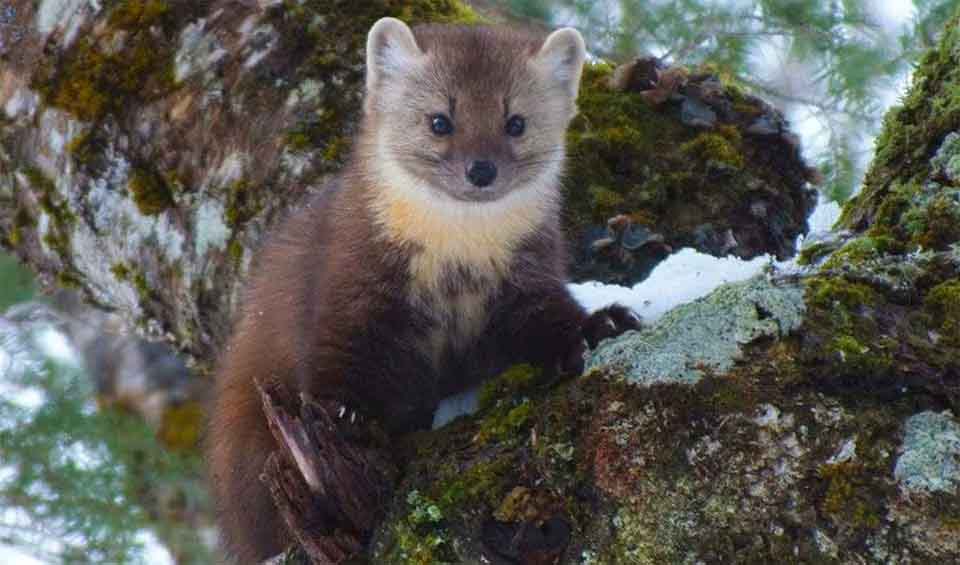Martes – Martens
The pelts of these species were used as currency in the middle ages
This genus comprises several species, including the well-known pine marten (Martes martes), the American marten (Martes americana), and the sable (Martes zibellina), among others. The distribution of martens spans both New World and Old World territories, with each species adapting to its specific ecological niche, resulting in variations in size, habitat preferences, and behaviors.
Martens are distinguished by their lithe and agile bodies, enabling them to navigate through their environment with grace. Their physical attributes, including short legs, elongated necks, and bushy tails, contribute to their sleek appearance. One of the most striking features of martens is their soft, thick fur, which varies in color from golden brown to almost black, depending on the species and region. This fur has historically made them targets for the fur trade, prized for its warmth and beauty.
Adaptable to a variety of habitats, martens can be found in dense forests, mountainous regions, and even in urban fringes where their natural habitats overlap with human settlements. Despite their terrestrial nature, martens are proficient climbers, a skill that allows them to escape predators and hunt for arboreal prey. They are primarily crepuscular, active at dusk and dawn, though their activity patterns can shift to diurnal during the mating season to increase encounters with potential mates.
Martens rely on their acute sense of hearing and smell to locate prey, which includes small mammals, birds, insects, and, occasionally, fruits and nuts. Their diet reflects their opportunistic feeding habits and plays a crucial role in controlling rodent populations in their ecosystems.
While martens are not currently considered globally threatened, certain populations face pressures from habitat loss, fragmentation, and direct persecution of their fur. The demand for marten fur, though diminished from its historical peaks, still exists in certain markets, posing a threat to these animals.
Species in this genus
American pine marten
Females can postpone embryo development up to 200 days, and the pregnancy only lasts about 28 days
European pine marten
Sometimes called the “squirrels of the weasel family” due to their impressive arboreal abilities
Yellow-throated Marten
Aren’t afraid of bigger animals, and they’ve been known to fight off dogs and even leopards!



